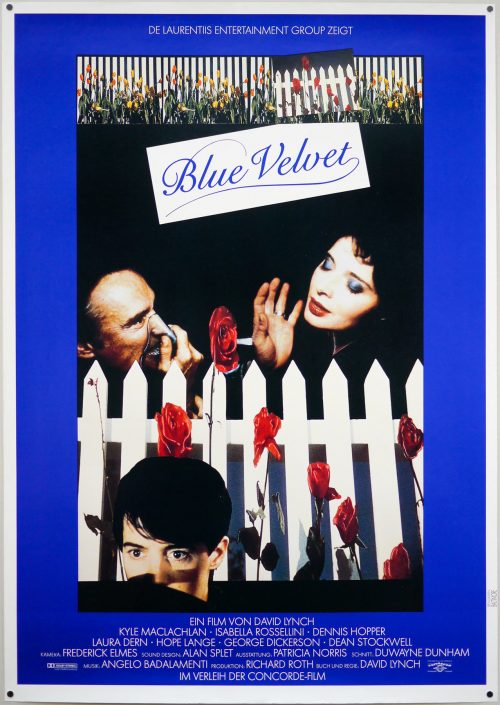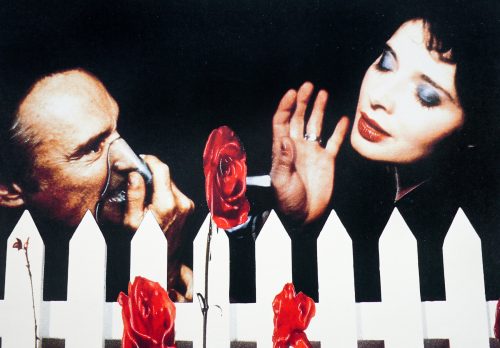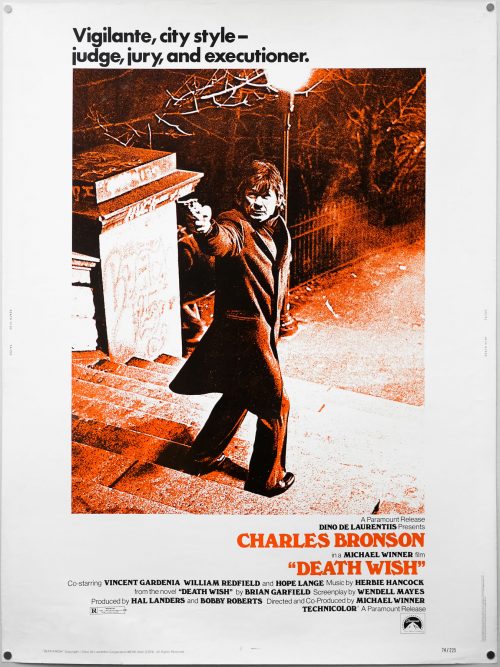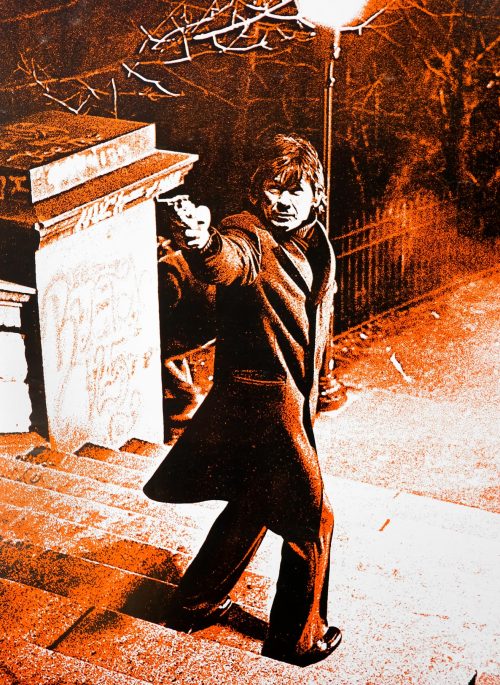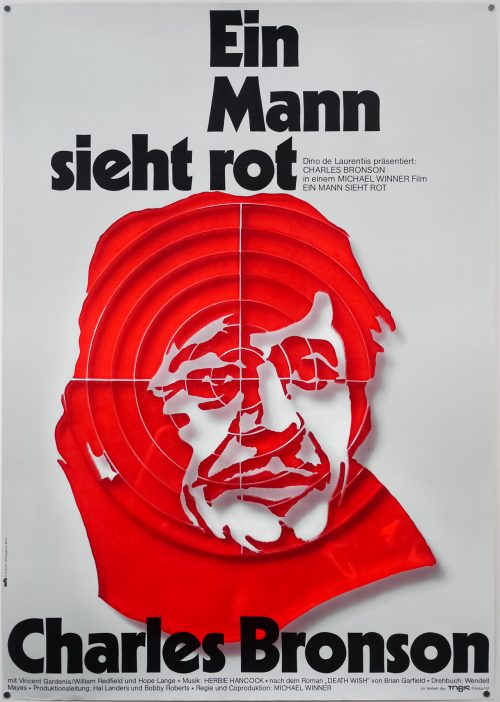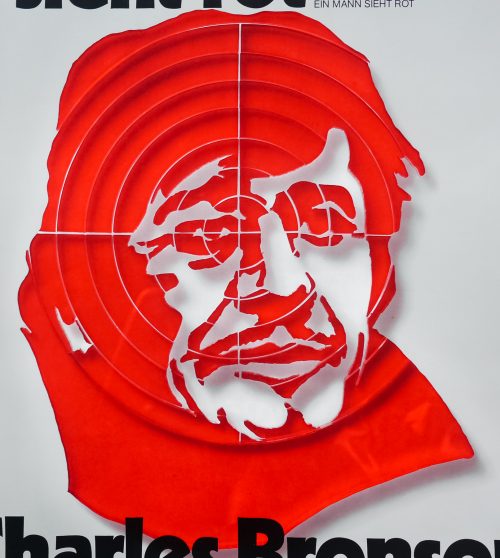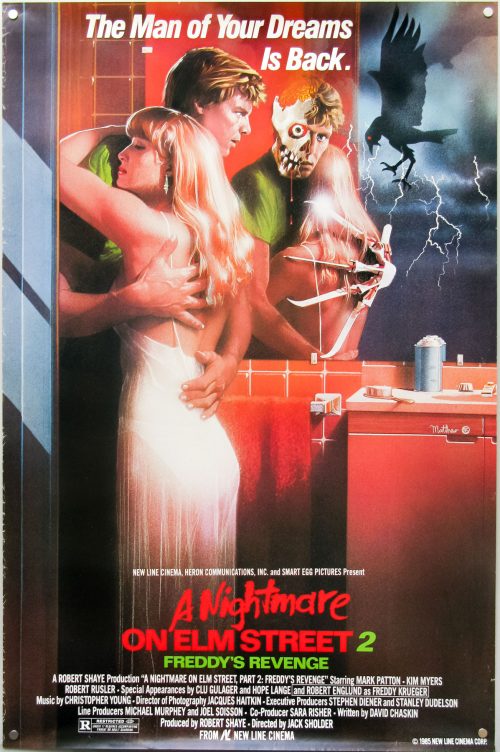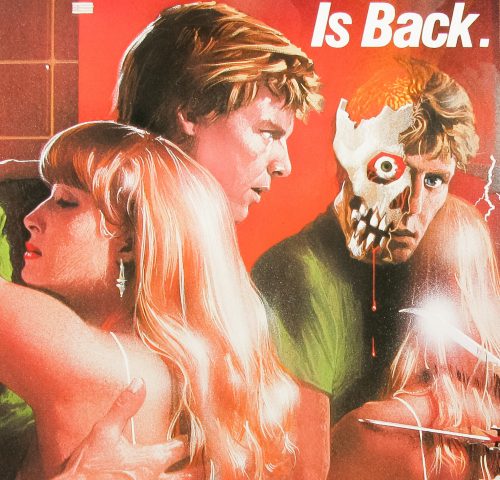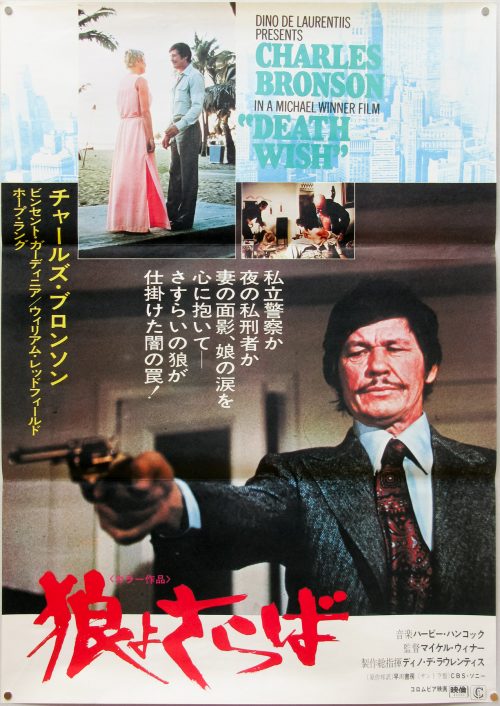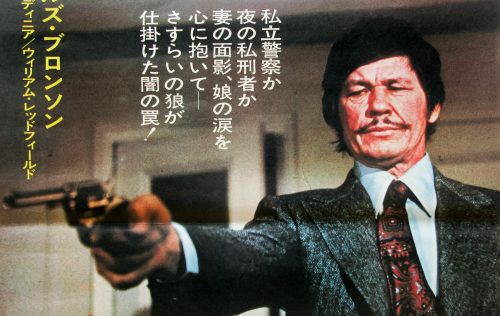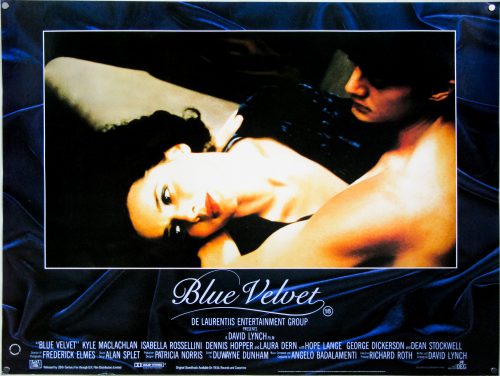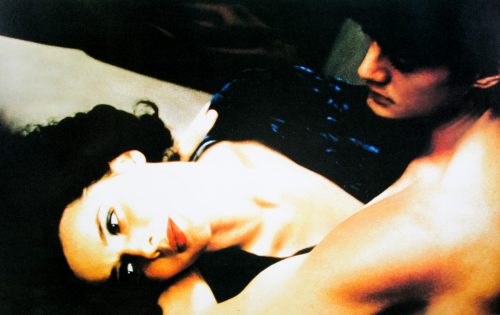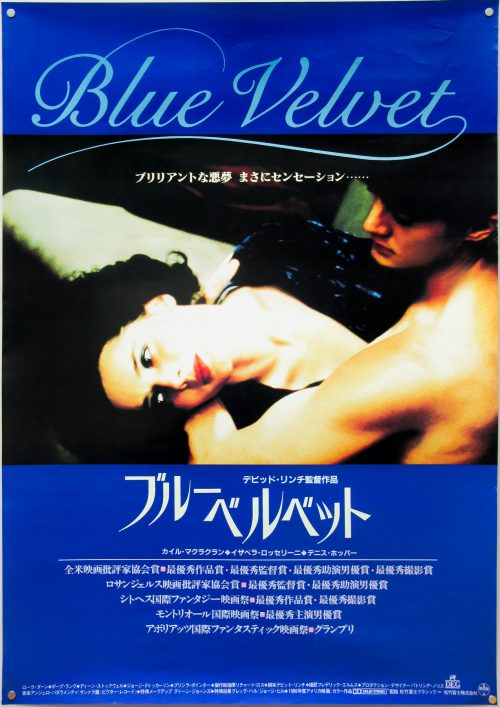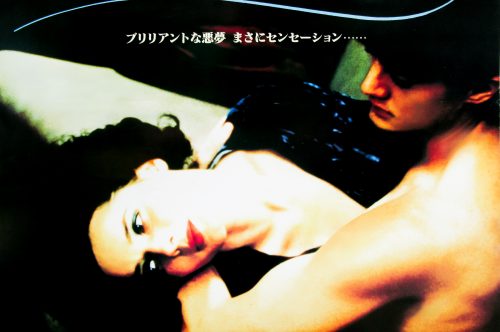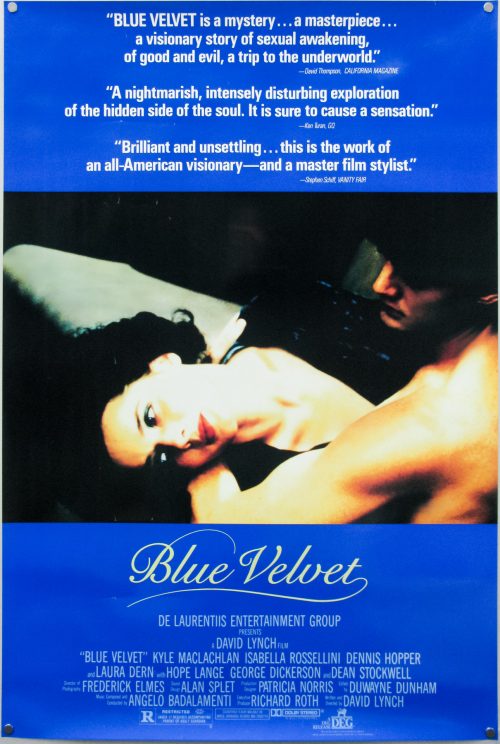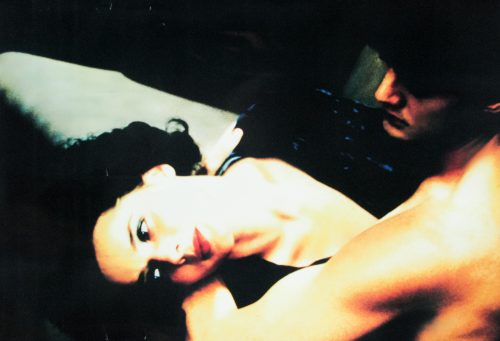- Title
- Blue Velvet
- AKA
- --
- Year of Film
- 1986
- Director
- David Lynch
- Starring
- Isabella Rossellini, Kyle MacLachlan, Dennis Hopper, Laura Dern, Hope Lange, Dean Stockwell, George Dickerson, Priscilla Pointer, Frances Bay, Jack Harvey, Ken Stovitz, Brad Dourif, Jack Nance
- Origin of Film
- USA
- Genre(s) of Film
- Isabella Rossellini, Kyle MacLachlan, Dennis Hopper, Laura Dern, Hope Lange, Dean Stockwell, George Dickerson, Priscilla Pointer, Frances Bay, Jack Harvey, Ken Stovitz, Brad Dourif, Jack Nance,
- Type of Poster
- A1
- Style of Poster
- --
- Origin of Poster
- Germany
- Year of Poster
- 1987
- Designer
- Benjamin Baltimore
- Artist
- --
- Size (inches)
- 23 10/16" x 33 5/16"
- SS or DS
- SS
- Tagline
- --
A unique design features on this German poster for the release of David Lynch’s cult mystery, Blue Velvet (1986). The film was long in gestation and Lynch has since said the story began to crystallise into a series of ideas as early as 1973. The critical and commercial failure of Lynch’s adaptation of Frank Herbert’s Dune (1984) had left the director bruised and deflated, so he was keen to return to an original story in the vein of his 1977 debut Eraserhead. Dino De Laurentiis, the producer behind Dune, agreed to finance and produce Blue Velvet for a relatively low-budget of $6m.
Lynch assembled an eclectic cast ready for production, including Isabella Rossellini, who was known for her modelling and TV adverts, Dennis Hopper and Kyle MacLachlan who had also appeared in Dune and would later gain worldwide fame as FBI Agent Cooper in Lynch’s TV series, Twin Peaks.
MacLachlan plays mild-mannered Jeffrey Beaumont who returns to his small hometown in North Carolina to visit his father who has suffered a stroke. Soon after arriving he takes a shortcut through a vacant lot and discovers a severed human ear on the ground. After taking the ear to the local police detective he becomes reaquainted with detective’s daughter Sandy (Lynch regular Laura Dern) and the pair decide to carry out their own investigation into the mystery.
They soon realise that the enigmatic nightclub singer Dorothy Vallens (Rossellini) has something to do with the missing ear and Jeffrey decides to start following her but makes the mistake of getting caught in her apartment. Vallens threatens him with a knife but soon afterwards the sociopathic Frank Booth (an incredible performance from Hopper) arrives and Jeffrey hides in the closet from where he is forced to watch Booth’s bizarre sexual proclivities. Jeffrey soon discovers that Booth has kidnapped Vallens’ son and he agrees to help her as he descends further into the sinister underworld hidden beneath a seemingly pleasant town. The film received mixed critical notices at the time but has since gone onto achieve cult status and is often cited as one of the best American films of all time. It’s also one of the director’s more accessible films, certainly in comparison to the likes of Inland Empire.
This German poster was created by a French designer who goes by the name Benjamin Baltimore (I’m assuming that’s not his actual name). I’m not quite sure why the German distributor used a French designer and the majority of the work in Baltimore’s portfolio is for French posters – Blue Velvet’s French poster is completely different in style. Blue Velvet is the rare film that has a unique poster for practically every country it was released in and emovieposter.com’s archive is a good way of viewing them all – see here. According to this article he’s responsible for over 600 film posters and has worked for a number of legendary directors during his career.
